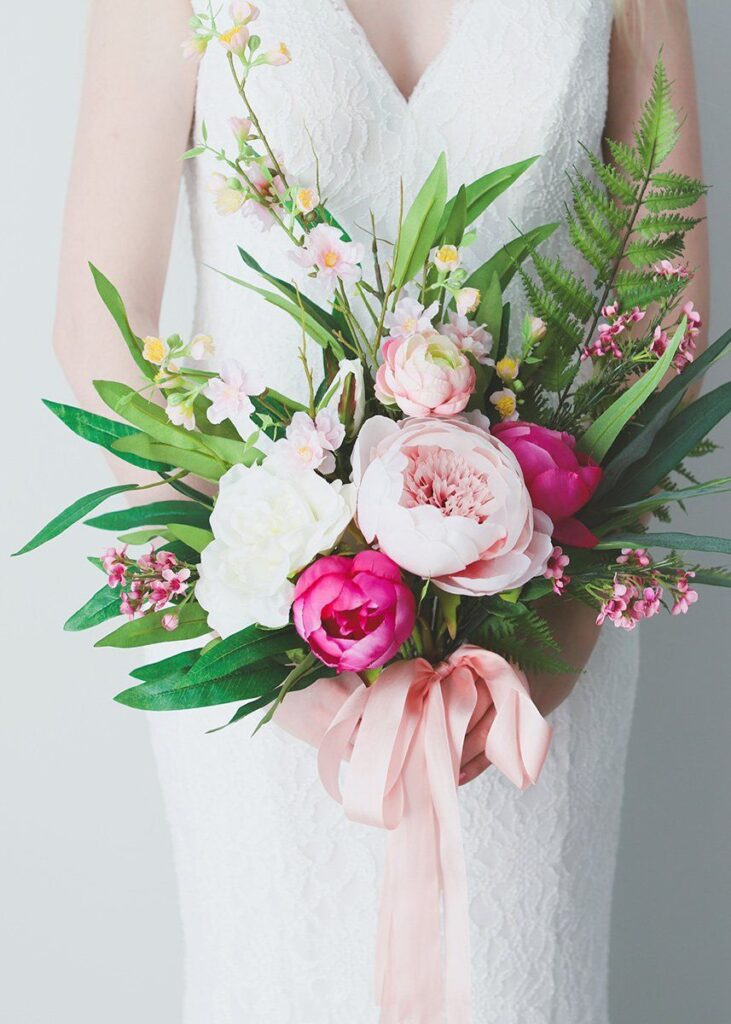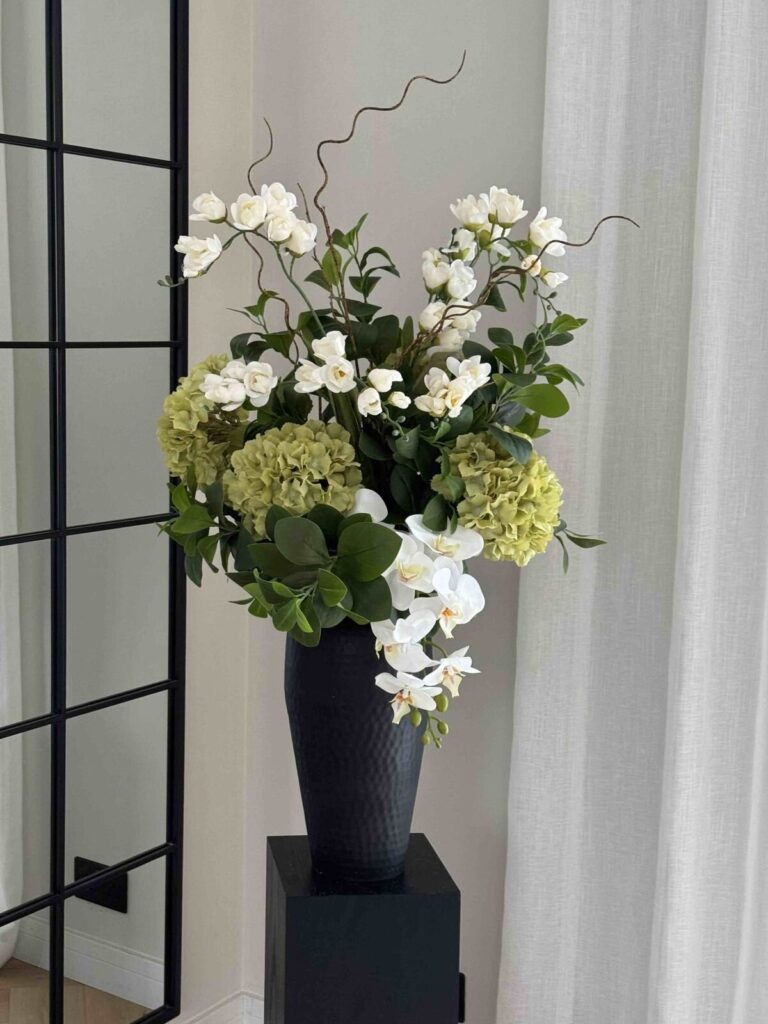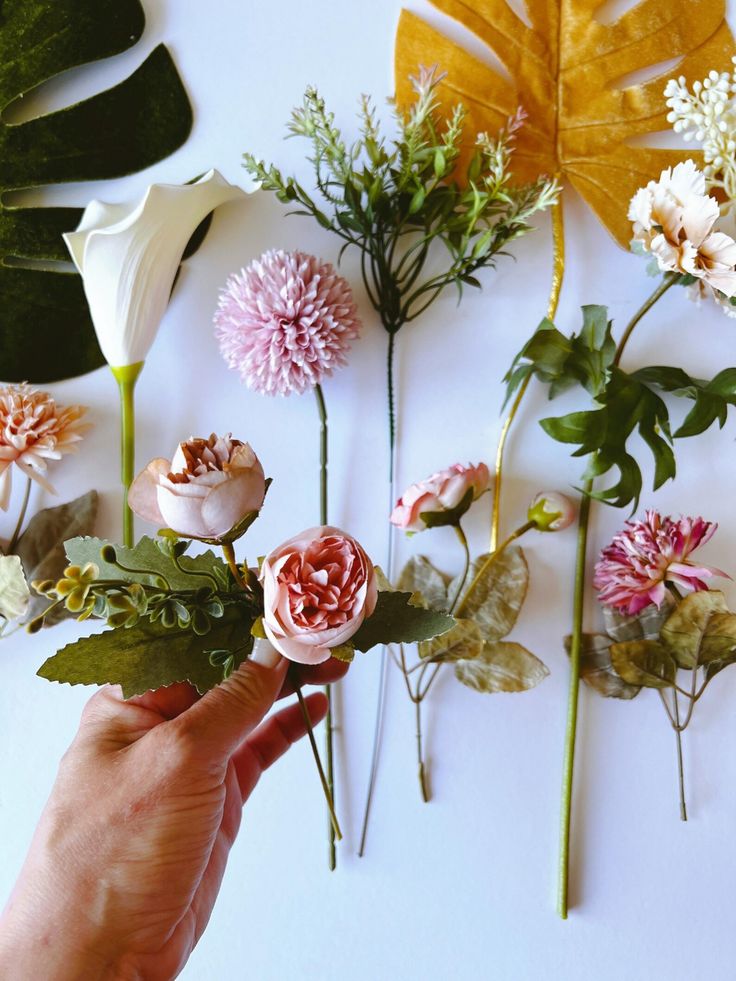What are the best quality fake flowers?
Tired of wilting roses or drooping tulips? I get it. As someone who’s worked with flowers for over a decade, I’ve seen how frustrating real blooms can be. That’s why I switched to high-quality artificial alternatives that stay perfect year-round.
The best quality fake flowers combine silk or latex petals with wire-reinforced stems, UV-resistant dyes, and realistic textures. Top brands like Pottery Barn, Nearly Natural, and our Botanic Blossoms line use these premium materials to create convincing arrangements that fool even florists.

When choosing artificial blooms, the difference between cheap plastic and luxury replicas becomes obvious immediately. Let me guide you through what makes some faux flowers worth their weight in gold while others belong in the dollar store.
What is the best material for fake flowers?
Ever touched a fake flower that felt like a grocery bag? I have – and it’s why material choice matters most. The wrong fabric can ruin even the most beautiful design.
Silk remains the gold standard for fake flowers, offering natural drape and sheen. Modern alternatives like latex, foam, or polyester blends work well for specific varieties. Avoid hard plastics – they look fake and feel unpleasant.

Breaking Down Material Choices
Here’s my professional ranking of common fake flower materials:
| Material | Realism | Durability | Best For | Price Range |
|---|---|---|---|---|
| Silk | 10/10 | 7/10 | Roses, peonies | $$$ |
| Latex | 9/10 | 8/10 | Tropical flowers | $$ |
| Polyester | 7/10 | 9/10 | Long-term displays | $ |
| Plastic | 3/10 | 10/10 | Budget decor | $ |
I’ve tested hundreds of samples in my warehouse. Silk flowers mimic natural petal movement best – they sway slightly when brushed, just like real blooms. Latex works wonderfully for orchids or anthuriums because it captures their waxy surface.
The stems matter too. Look for:
- Wrapped wire stems (bendable but sturdy)
- Real wood branches for arrangements
- Matte finishes (glossy looks cheap)
Our Botanic Blossoms line uses a proprietary silk-polyester blend that resists fading while maintaining that crucial delicate feel. After three years of development, we achieved the perfect balance between durability and realism.
Are Pottery Barn faux flowers good?
Walking through Pottery Barn’s floral section always tempts me – their displays are gorgeous. But are they worth the premium price?
Pottery Barn offers above-average quality faux flowers with excellent color matching and stem construction. However, their prices run 20-30% higher than similar quality alternatives from specialty floral suppliers.

The Pottery Barn Quality Breakdown
Having purchased and disassembled their best-selling arrangements, here’s my honest assessment:
Strengths:
- Consistent color schemes that match current decor trends
- Well-proportioned arrangements (no oddly small roses)
- Good weight distribution in vases
- Convenient local return policy
Weaknesses:
- Some stems use cheaper plastic bases
- Limited customization options
- Seasonal items sell out quickly
- Bulk discounts rarely available
For example, their $129 Magnolia Wreath uses real-looking latex magnolias but pairs them with less convincing plastic greenery. At our workshop, we’d never mix material qualities like that – it undermines the whole illusion.
That said, if you need just one centerpiece and want to see it in person first, Pottery Barn works. For commercial clients needing 50 matching arrangements? I’d suggest specialty suppliers offering bulk rates and material consistency.
What to look for when buying artificial flowers?
Last month, a client showed me her "premium" fake hydrangeas that looked like colored cotton balls. Don’t make her mistake – know what separates quality fakes from craft store rejects.
Focus on color variation, stem details, and petal texture when selecting artificial flowers. High-end versions include natural flaws like slight color gradients, veining, and irregular edges that mimic living plants.

The Realism Checklist
After supplying flowers for 300+ weddings, I developed this inspection system:
1. Color Evaluation
- Avoid solid, flat colors
- Look for subtle ombre effects
- Check for UV protection (prevents fading)
2. Tactile Tests
- Petals should feel slightly cool like real plants
- Leaves should flex not crack
- No plastic seams visible
3. Structural Integrity
- Stems should hold their shape when bent
- Flower heads shouldn’t wobble
- Arrangements should have natural spacing
4. Botanical Accuracy
- Correct number of petals
- Proper leaf arrangement
- Seasonally appropriate details
A little trick I use: place the fake flower next to a real one in photos. If you can’t immediately tell which is which from 3 feet away, you’ve found a quality product. Our best-selling garden roses pass this test consistently, which explains why event planners keep reordering them.
How do you make cheap fake flowers look expensive?
My first apartment was full of $5 fake plants from big-box stores. Through trial and error, I discovered professional tricks to elevate bargain blooms.
Transform cheap fake flowers by steaming petals for shape, dusting with matte spray to remove plastic shine, and arranging them asymmetrically with real fillers like dried grasses or preserved moss.
 !
!
Professional Upgrade Techniques
Here’s exactly how I’d refresh a $10 grocery store bouquet:
Materials Needed:
- Fabric stiffener spray
- Matte finishing spray
- Floral tape
- Hot glue gun
- Realistic filler greens
Step-by-Step Process:
-
Separate Components
- Remove all flowers from stems
- Discard obviously fake plastic leaves
-
Reshape Petals
- Use a handheld steamer to soften plastic
- Gently curl edges with fingers
- Let cool in natural positions
-
Reduce Shine
- Lightly spray with matte finish
- Dust with pastel chalk for color depth
- Add subtle veining with thin paint
-
Rebuild Stems
- Wrap bare stems with floral tape
- Insert into realistic looking artificial branches
- Secure with hot glue
-
Final Arranging
- Use odd numbers of blooms
- Add real dried elements for texture
- Leave some "imperfect" spacing
Last Christmas, I transformed $50 worth of discount poinsettias into a lobby display that guests swore were fresh. The secret? Mixing in real pinecones and spraying the arrangement with subtle evergreen scent.
How do you make fake flowers look more realistic?
At a recent trade show, visitors kept touching our cherry blossoms – they couldn’t believe they weren’t real. Here’s how we achieve that level of realism.
Layer real elements like preserved moss or dried pods with high-quality fake flowers. Add subtle imperfections – slightly torn leaves, uneven petal distribution, or natural color variations that occur in living plants.

Advanced Realism Techniques
Professional florists use these methods to fool even keen observers:
Environmental Staining
- Dab diluted brown paint where water would collect
- Add faint yellowing on older leaves
- Create subtle dirt splashes on lower stems
Botanical Accuracy
- Research how the real plant grows
- Mimic natural growth patterns
- Include buds at different stages
Sensory Enhancements
- Add floral-scented microbeads
- Use textured paints for pollen effects
- Include delicate fake dew drops
Seasonal Touches
- Spring: Include emerging buds
- Summer: Show full, lush growth
- Fall: Add color transitions
- Winter: Incorporate frost effects
I once created a fake peony display using these techniques that fooled a master gardener until she touched them. The key was studying real peonies – their petals have a specific curl pattern, and the centers contain multiple layers of stamens that cheap fakes ignore.
Conclusion
Quality fake flowers combine premium materials with artisan details. Whether upgrading discount finds or investing in luxury arrangements, focus on texture, color depth, and natural imperfections for undeniable realism.
